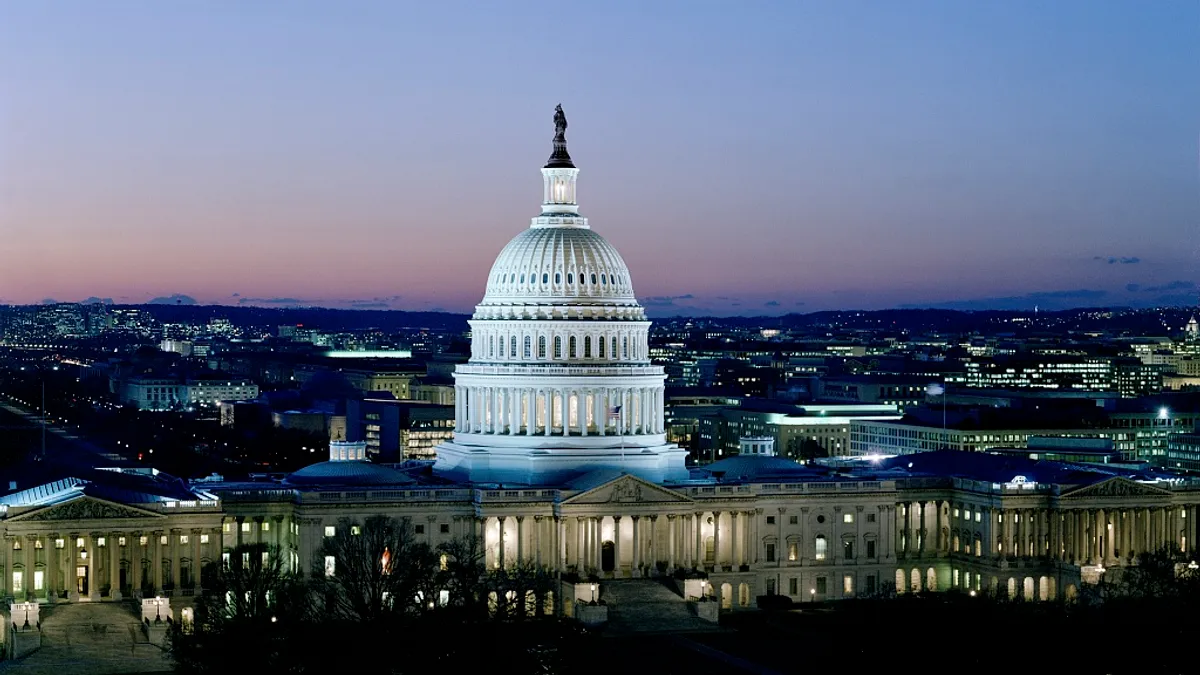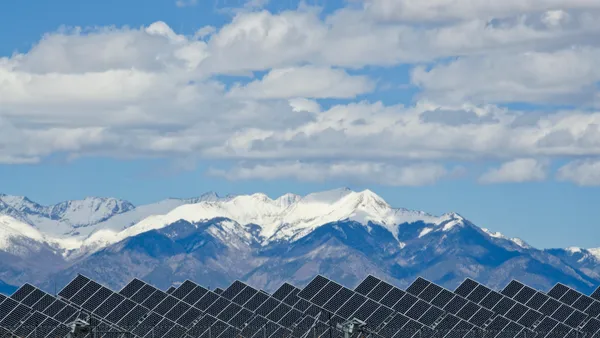Dive Brief:
- The climate bill introduced by Democrats in the U.S. Senate this week has gotten press for its climate goals, but the bill also includes an extensive list of provisions to modernize the U.S. energy infrastructure and promote renewable generation.
- Setting an ambitious target to cut carbon emissions 2% annually (34% by 2025), the American Energy Innovation Act of 2015 would also create a technology-neutral tax incentive program for clean energy beginning in 2017 and extend tax incentives for wind and solar until then.
- The extensive bill summary also includes provisions for open-source distribution planning, microgrid and storage pilots for the DOE, upgrades to the gas pipeline system and electric grid, and the establishment of a national Energy Efficiency Resource Standard, among other proposals.
Dive Insight:
This week has been jammed with climate change messaging as Pope Francis descended on Washington D.C.
That includes Democrats in the U.S. Senate, who are leaving no stone unturned when it comes to energy and climate policies in their new bill. Earlier this week, Maria Cantwell (D-WA), the ranking member on the Senate Energy Committee, rolled out the ambitious climate bill that sets a higher target to for cutting carbon emissions than the U.S. EPA's Clean Power Plan.
Though its future appears bleak, with no chance of passing the GOP-controlled Congress, the bill does offers a substantive roadmap to guide the decarbonization and modernization of the nation's energy system.
The bill includes provisions for upgrading the grid, supporting basic research, shielding consumer energy information, and increasing energy efficiency standards in buildings. Vox points out it also would also create a national Energy Efficiency Resource Standard and reform the nation's clean energy tax policies.
While tax credits for clean energy today are based on specific technologies, like wind or solar, the bill would create a technology-neutral incentive program that would allow clean energy developers to choose a 30% investment or production tax credit for their projects. Eligibility for the credits would be based on the amount of greenhouse gas a facility emits per kWh of electricity generated.
Existing power plants that add energy storage or carbon capture technology would also be eligible for a 30% investment tax credit on those projects as well.
Clean energy supporters have hailed the bill's expansive scope, but many say it's missing one key policy: a price on carbon. Putting a price on greenhouse gas emissions has long been a favored policy of many environmental economists, but it became political taboo after Midwestern Democrats killed a landmark cap-and-trade bill in 2009. Some researchers at UC Berkeley, however, have recently suggested that clean energy incentives can spur technological development faster than a price on carbon.
Republicans in the Senate rejected the bill as "just a warmed-over version of what has failed in the past," according to Sen. John Barrasso (R-WY).
"Democrats say they did it to send a message and the message they're sending is higher energy costs for hard-working Americans," Barrasso told SNL. "They're sending a message of fewer energy jobs and they're sending a message of less reliable energy to America."













